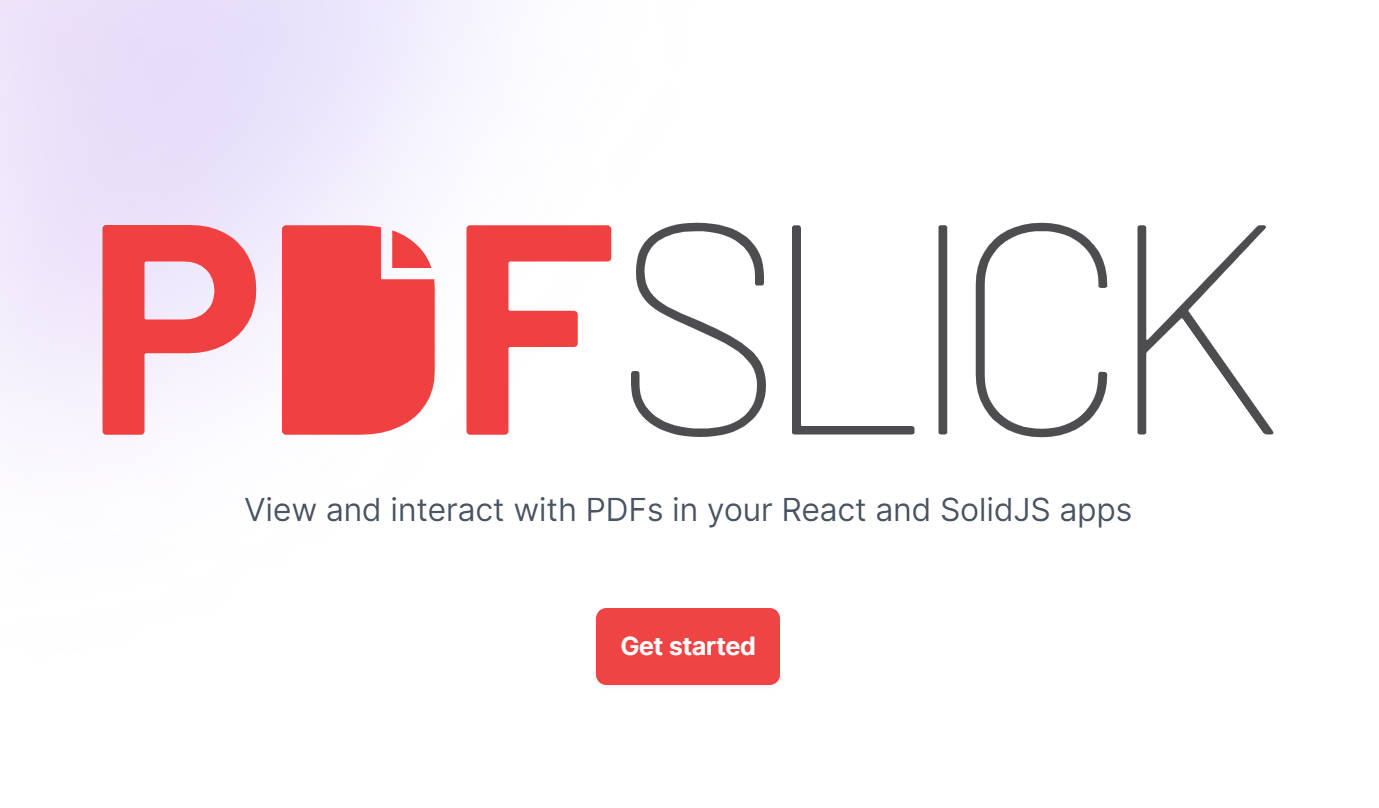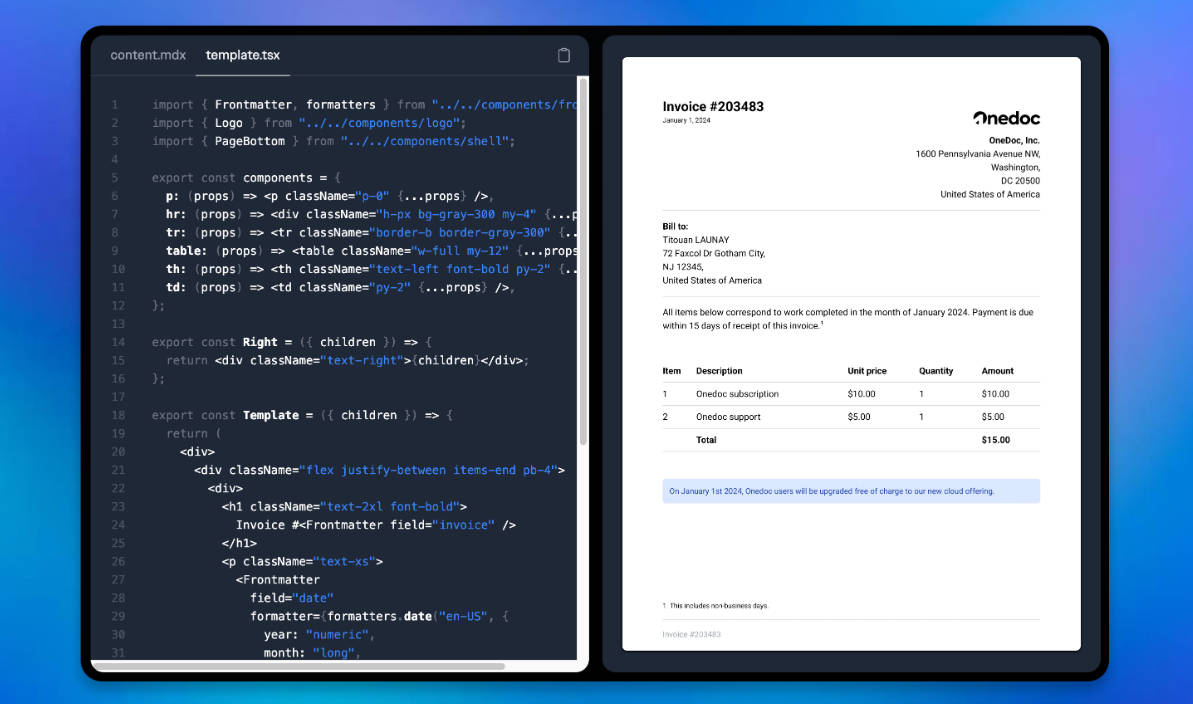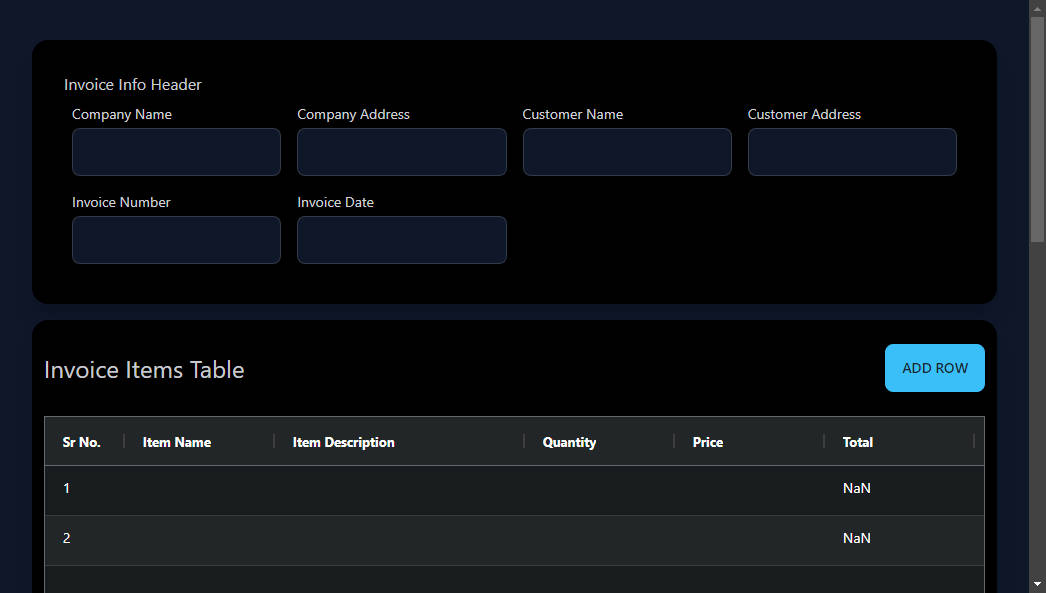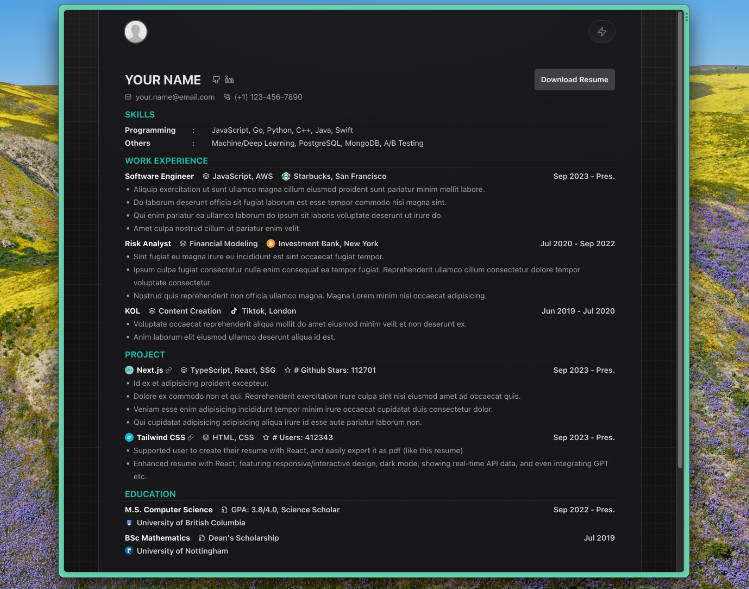, and utilises Zustand to provide a reactive store for the loaded documents.
PDFSlick for React
To get started with React run:
npm install @pdfslick/react
# yarn add @pdfslick/react
# pnpm add @pdfslick/react
You can start using PDFSlick with the usePDFSlick() hook, like with the following basic example:
import { usePDFSlick } from "@pdfslick/react";
import PDFNavigation from "./yourcomponents/PDFNavigation";
//
// It is required to include PDFSlick's CSS styles once
// you can do it in your main `App.tsx` for example
//
import "@pdfslick/react/dist/pdf_viewer.css";
type PDFViewerComponentProps = {
pdfFilePath: string;
};
const PDFViewerComponent = ({ pdfFilePath }: PDFViewerComponent) => {
const { viewerRef, usePDFSlickStore, PDFSlickViewer } = usePDFSlick(pdfFilePath, {
scaleValue: "page-fit"
});
/*
Access the store with `usePDFSlickStore()` hook — you can pass is
as a prop to other components (like with `<PDFNavigation />` below)
Toolbars, Sidebars, components which render thumbnails etc.
and use it as here to get and react on
PDF document's and viewer's properties and changes
*/
const scale = usePDFSlickStore((s) => s.scale);
const numPages = usePDFSlickStore((s) => s.numPages);
const pageNumber = usePDFSlickStore((s) => s.pageNumber);
return (
<div className="absolute inset-0 pdfSlick">
<div className="relative h-full">
<PDFSlickViewer {...{ viewerRef, usePDFSlickStore }} />
{/*
Pass PDFSlick's store to your custom components
*/}
<PDFNavigation {...{ usePDFSlickStore }} />
{/*
PDFSlick's store values automatically update
*/}
<div className="absolute w-full top-0 left-0">
<p>Current scale: {scale}</p>
<p>Current page number: {pageNumber}</p>
<p>Total number of pages: {numPages}</p>
</div>
</div>
</div>
);
};
export default PDFViewerComponent;
Provided with the PDF Document path and PDFSlick options object, the usePDFSlick() hook returns an object consisting (among the other things) of:
PDFSlickVieweris the PDF Viewer component used for viewing the PDF documentviewerRefis therefcallback that is provided as a prop to the<PDFSlickViewer />componentusePDFSlickStoreenables using PDFSlick store within your React components
More on using PDFSlick with React | Checkout the React Examples
PDFSlick for SolidJS
To get started with PDFSlick for SolidJS run:
npm install @pdfslick/solid
# yarn add @pdfslick/solid
# pnpm add @pdfslick/solid
You can start using PDFSlick with the usePDFSlick() hook, like with the following basic example:
import { Component, createSignal } from "solid-js";
import { usePDFSlick } from "@pdfslick/solid";
import PDFNavigation from "./yourcomponents/PDFNavigation";
//
// It is required to include PDFSlick's CSS styles once
// you can do it in your main `App.tsx` for example
//
import "@pdfslick/solid/dist/pdf_viewer.css";
type PDFViewerComponentProps = {
pdfFilePath: string;
};
const PDFViewerComponent: Component<PDFViewerComponentProps> = ({ pdfFilePath }) => {
const { viewerRef, pdfSlickStore: store, PDFSlickViewer } =
usePDFSlick(pdfFilePath);
return (
<div class="absolute inset-0 flex flex-col pdfSlick">
<div class="flex-1 relative h-full">
<PDFSlickViewer {...{ store, viewerRef }} />
{/*
Pass PDFSlick's store to your custom components (like the `<PDFNavigation />` below) —
Toolbars, Sidebars, components which render thumbnails etc.
and use it as here to get and react on
PDF document and viewer properties and changes
*/}
<PDFNavigation {...{ store }} />
{/*
PDFSlick's store values automatically update
*/}
<div className="absolute w-full top-0 left-0">
<p>Current scale: {store.scale}</p>
<p>Current page number: {store.pageNumber}</p>
<p>Total number of pages: {store.numPages}</p>
</div>
</div>
</div>
);
};
export default PDFViewerComponent;
Provided with the PDF Document path and options object, the usePDFSlick() hook returns an object consisting (among the other things) of:
PDFSlickVieweris the PDF Viewer component used for viewing the PDF documentviewerRefis therefcallback that is provided as a prop to the<PDFSlickViewer />componentpdfSlickStoreis the PDFSlick store
More on using PDFSlick with Solid | Checkout the SolidJS Examples
Motivation
PDF.js is an amazing piece of software. It is also a very stable and mature one — it powers the PDF viewer in Mozilla Firefox and it’s been around since 2011. However, it’s all Vanilla JavaScript, and when it comes to using it with libraries like React and SolidJS (although possible) it’s a litte bit hard in terms of integrating it in these Component- and reactive-like environments. PDFSlick attempts to wrap all of that fascinating functionality into one that is easier to fit in React and SolidJS worlds — as components and a reactive store.
Core Concepts
The core of PDFSlick is within the @pdfslick/core package. It wraps PDF.js‘s functionality and links it to the store. This @pdfslick/core package is the basis for the React and SolidJS packages, which additionally transform the store and make it suitable for the adequate library, as well as providing components for the PDF viewer and thumbnails.
Depending on your needs, at this you might find it useful to continue with learning more about using PDFSlick with React and SolidJS respsectivelly. However, if really interested you can learn more about using PDFSlick’s @pdfslick/core package with Vanilla JS apps and with libraries other than React and SolidJS in the sections below.
Learn more about PDFSlick | Checkout the Examples





